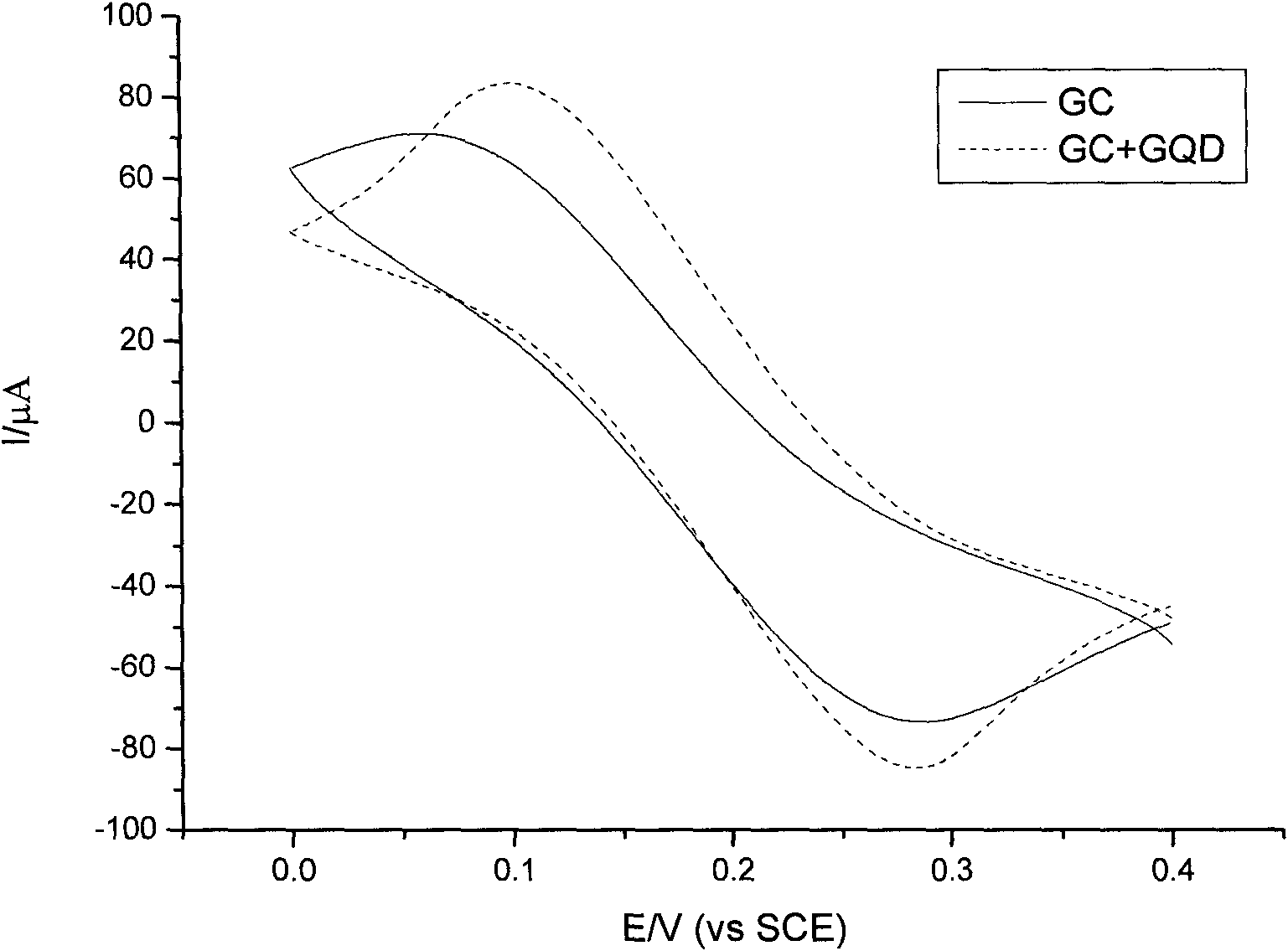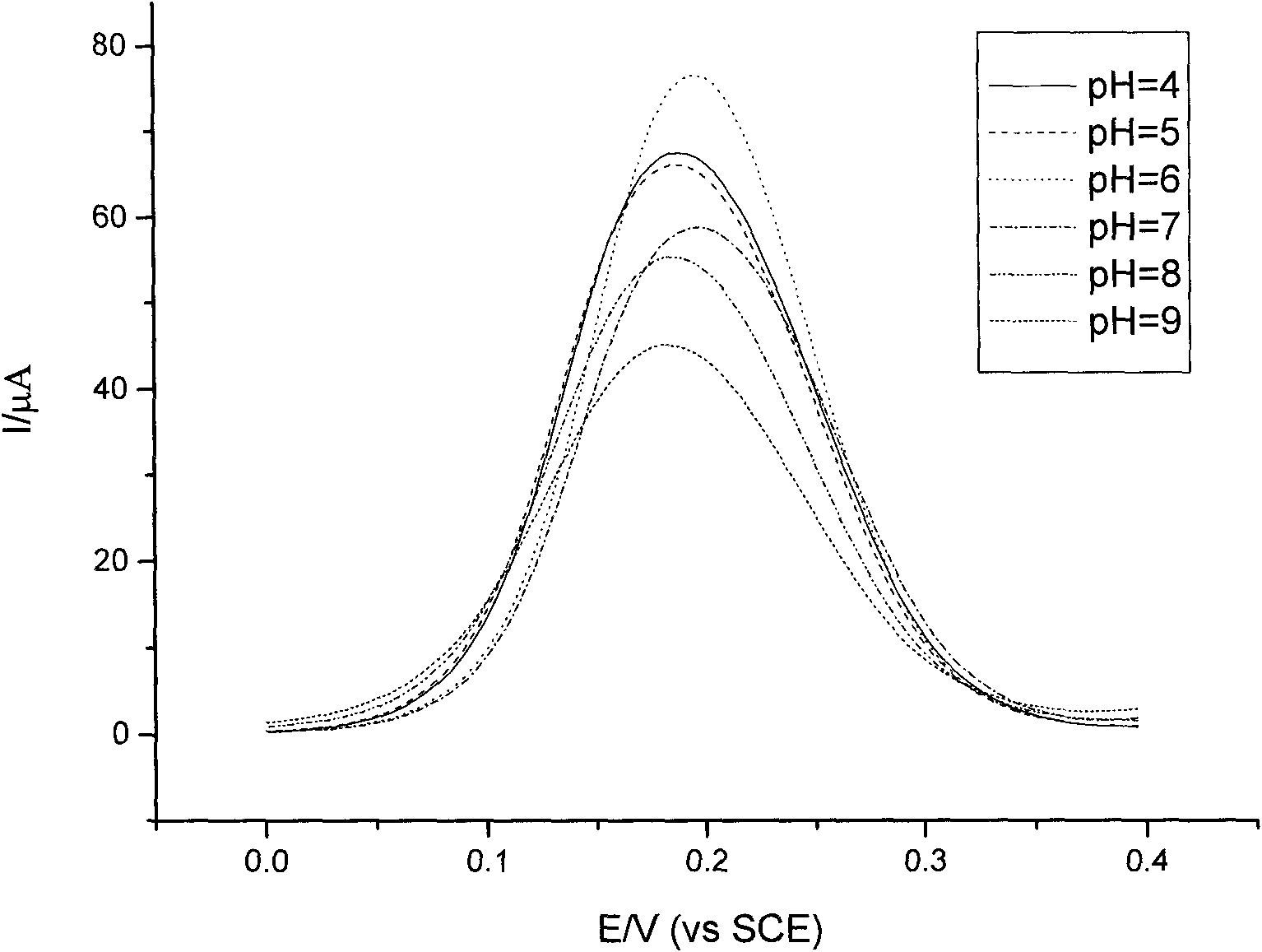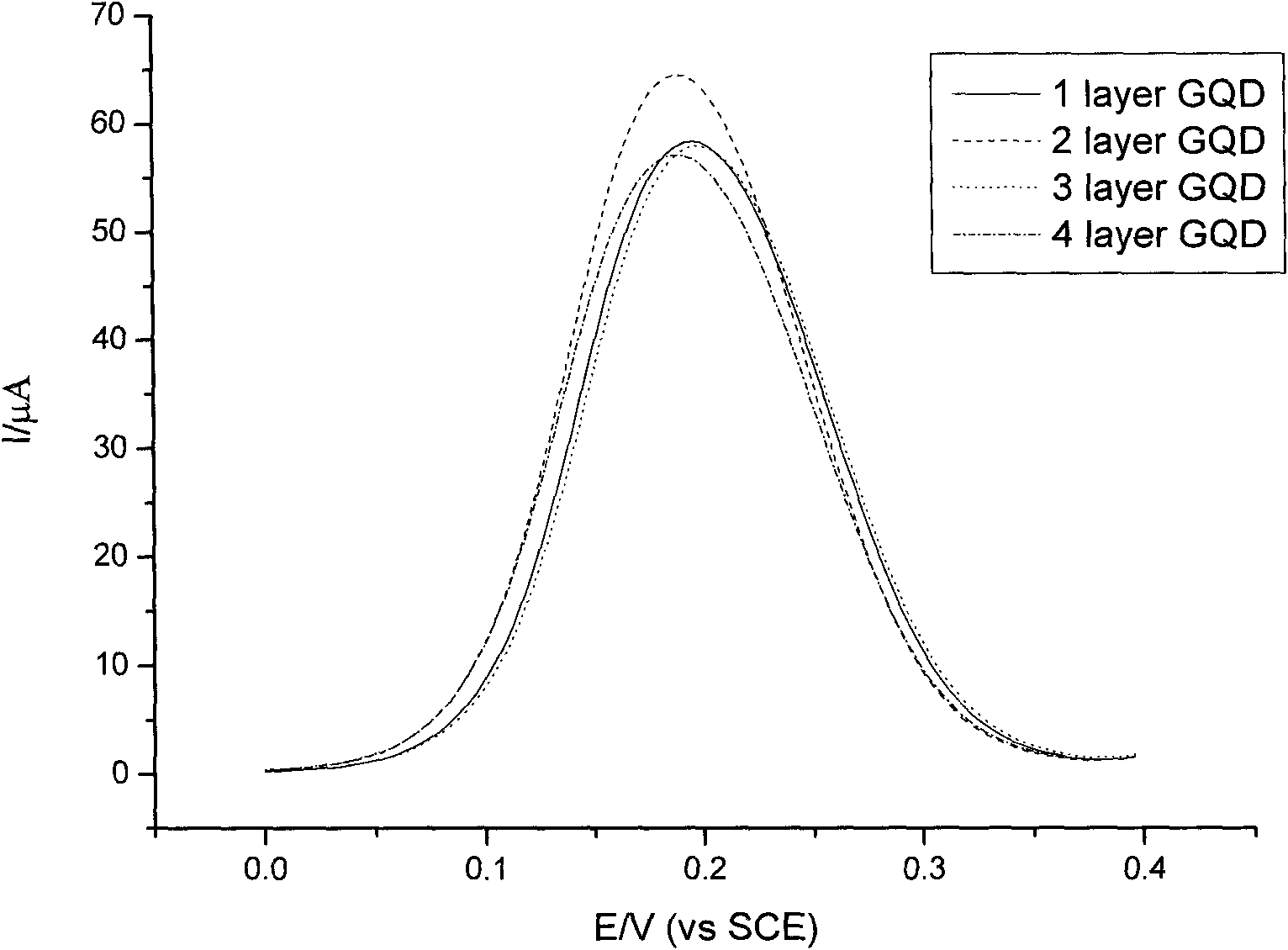Electrochemical biosensor modified by graphene quantum dot and preparation method thereof
A technology of graphene quantum dots and biosensors, applied in the direction of material electrochemical variables, scientific instruments, instruments, etc., can solve the problems of DNA biosensors that have not been reported, and achieve the effect of broad application prospects
- Summary
- Abstract
- Description
- Claims
- Application Information
AI Technical Summary
Problems solved by technology
Method used
Image
Examples
Embodiment 1
[0019] Example 1: Modification of glassy carbon electrode
[0020] The glassy carbon electrode was first polished on coarse corundum sandpaper (400 mesh), then on fine corundum sandpaper (1000 mesh), and finally on silk containing alumina (particle size 0.05 μm) mortar, and then ethanol, Water was ultrasonically cleaned for 5 minutes respectively to obtain a bare glassy carbon electrode with a clean surface. The concentration is 15mg L -1 10 μL of the graphene quantum dot aqueous solution was added dropwise to the surface of the treated electrode. In the first two hours, the electrode surface was covered with an Eppendorf tube to allow the solution to slowly evaporate to form a uniform covering layer, and then naturally After drying, the graphene quantum dot-modified glassy carbon electrode is obtained, which is stored in a refrigerator at 4°C for later use.
[0021] Graphene oxide used in the present invention is synthesized by graphite powder according to the Hemmers metho...
Embodiment 2
[0022] Example 2: Electron transfer of graphene quantum dots on the electrode surface
[0023] The bare glassy carbon electrode with clean surface treatment and the glassy carbon electrode modified by graphene quantum dots prepared by the present invention were respectively measured on the CHI660c electrochemical workstation in terms of their K-containing 3 [Fe(CN) 6 ] / K 4 [Fe(CN) 6 ] The magnitude of the cyclic voltammetry signal in the electrolytic buffer of the probe. For experimental results, see figure 1 , the electrical signal of the electrode modified by graphene quantum dots is significantly larger than that of the bare glassy carbon electrode. It can be seen that graphene quantum dots are indeed an ideal electrode surface film material.
Embodiment 3
[0024] Example 3: Effects of Different pH Values of Solutions on Electrochemical Signals
[0025] Using the differential voltammetry pulse method, the glassy carbon electrodes modified by graphene quantum dots were respectively immersed in the buffer solution (10mM Tris-HCl, 1mM EDTA, 0.1M NaCl, pH 4-9) containing single-stranded DNA or double-stranded DNA. For 1 hour each, electrical signals were measured. The single-stranded DNA 1 strand sequence: 5'-TCT CTC AGT CCG TGG TAG GGC AGG TTG GGG TGA CT-3', the 2nd strand is the complementary sequence of 1st strand: 5'-AG TCA CCC CAA CCT GCC CTA CCA CGG ACT GAG AGA -3'. See results figure 2 , when the pH value of the solution is 4 or 5, there is little difference in the electrical signal, and when the pH value is 6, the electrical signal increases greatly, and the electrical signal decreases significantly from pH 7 to pH 9. It can be seen that graphene quantum dots are at pH 6 of the solution The modified electrode can obtain...
PUM
| Property | Measurement | Unit |
|---|---|---|
| particle size | aaaaa | aaaaa |
Abstract
Description
Claims
Application Information
 Login to View More
Login to View More - R&D
- Intellectual Property
- Life Sciences
- Materials
- Tech Scout
- Unparalleled Data Quality
- Higher Quality Content
- 60% Fewer Hallucinations
Browse by: Latest US Patents, China's latest patents, Technical Efficacy Thesaurus, Application Domain, Technology Topic, Popular Technical Reports.
© 2025 PatSnap. All rights reserved.Legal|Privacy policy|Modern Slavery Act Transparency Statement|Sitemap|About US| Contact US: help@patsnap.com



